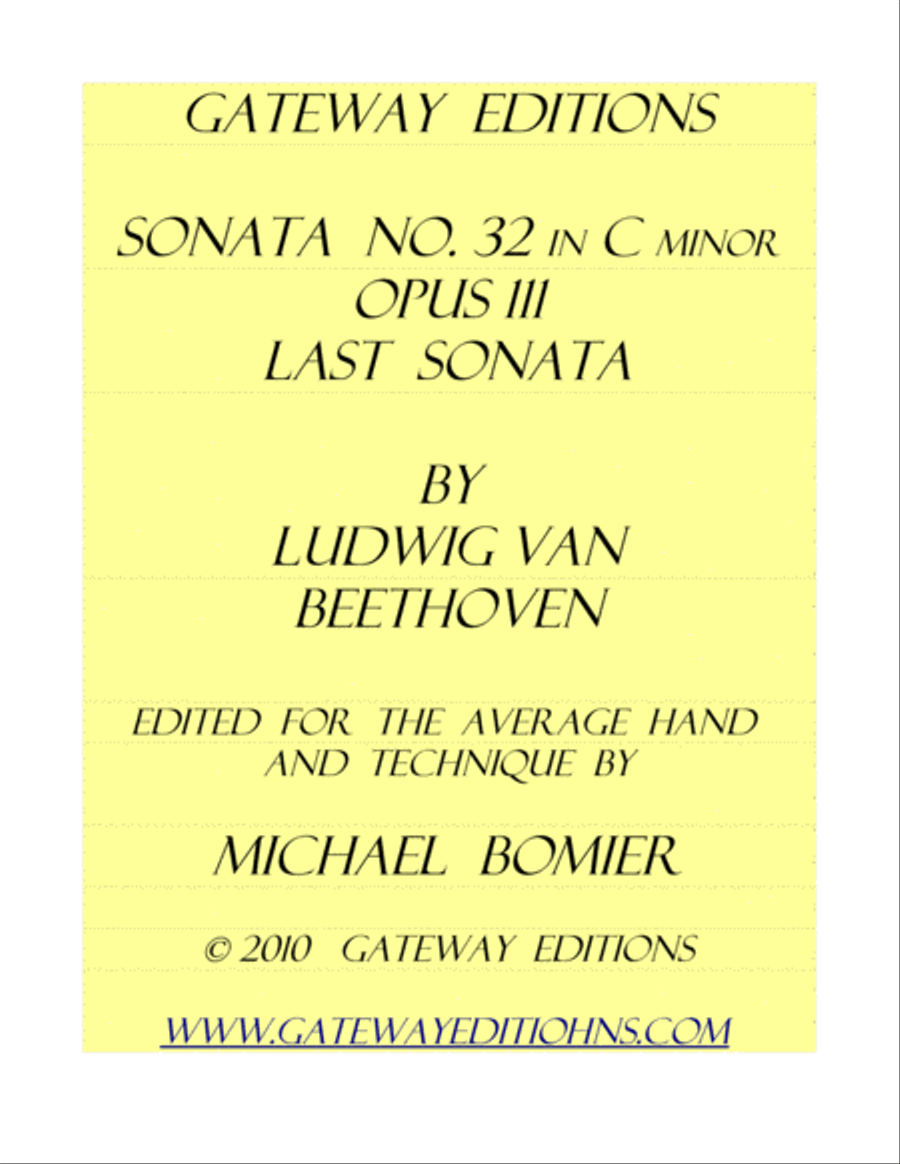Piano Solo - Level 5 - Digital Download SKU: A0.862673 Composed by Beethoven, L. van. Arranged by Michael Bomier. Classical,Concert,Romantic Period,Standards. Score. 46 pages. Michael Butkus-Bomier #3684169. Published by Michael Butkus-Bomier (A0.862673). GateWay Editions was established to bring Europe's great piano music to players with average-size hands and technique. This piece, which, in the company of Islamey, Gaspard, the Etudes-Tableaux of Rachmaninoff and various Liszt pieces, is at the pinnacle of both interpretive and technical challenges, is now brought into MUCH clearer focus with our new edition. Since the piece is practically a sacred text, no notes have been changed. Period. What HAS been changed is the presentation, especially in the 2nd movement, which is also our audio sample here. The small note-values, the radical time signatures, the measures that often take up an ENTIRE line of commercially-printed music, and the decided lack of cautionary accidentals: all these elements have been pre-decoded, essentially. No more using a hand-lens to see if that mark is a slur or a tie, or both! No more straining to see what note is held over, while the new one strikes. Our setting here, which you can see in the sample, often takes each BEAT, and puts a barline there, along with a common time signature, 3/4, 6/8, 4/4, etc. No smaller fractions, and no vast forest of dots and flags. All the 2nd movement rhythms have been arithmetically expanded, while maintaining their relationships. All the ornamentation, with its hidden melody, has been written out.So, while this piece has not been made any easier to play, it HAS been made vastly easier to read. One might claim that it is now readable at all, whilst the original cannot be deciphered at sight without great mental and visual effort. Please, print this double-sided for best results, as the repeats are either on a single page, or are on facing pages in our formatting. Single-sided gives you that same control, if you wish. Enjoy the masterwork of the Master of Masters! MBB
